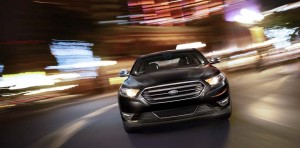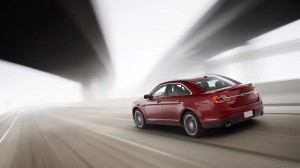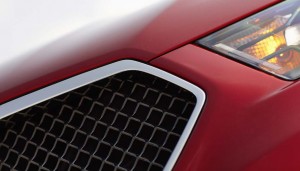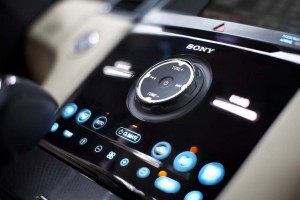
Ford updates the Taurus for 2013, adding new features and a second EcoBoost engine rated at 31 mpg highway.
Just three years into its latest run, the Ford Taurus is getting an update designed to enhance its appeal through a mix of design changes, technological updates and, perhaps most significantly, more fuel-efficient powertrains.
The 2013 Taurus will become the first Ford product to offer two versions of Ford’s new high-mileage EcoBoost engine technology, one capable of delivering up to 31 miles per gallon, a significant figure for such a large sedan.
The new Taurus is “a rolling showcase of our best technologies and features,” proclaimed Ford’s global product czar, Derrick Kuzak, during a New York Auto Show preview.
The Taurus is one of the best-known nameplates in the American market, industry studies have shown. First introduced in 1986, the sedan became an instant best-seller before Ford began to shift focus to its more profitable light truck models. The nameplate was briefly allowed to lag, but when he joined the company four years ago, then-new CEO Alan Mulally pressed for its return.
The outgoing version was launched three years ago, migrating from a midsize to large car platform but renewing the original Taurus focus on distinctive styling and advanced features reflecting Ford’s strategy of “democratizing technology.” That includes the new touchscreen and voice-operated MyFordTouch system, as well as a self-parking feature previously found only in high-line luxury automobiles.
The look of the 2013 Ford Taurus is familiar, though, with the changes limited to details such as a new hood with a “power dome” designed to imply performance, a new rear fascia and revised taillights and chrome exhaust tips now used on all versions of the sedan.
The revised grille, meanwhile, has a functional purpose, adopting active shutters that can close when the engine doesn’t need a stream of cooling air. Also used on the new, 2012 Ford Focus, this technology reduces aerodynamic drag, generating an estimated 2% improvement in average fuel efficiency, according to Kuzak.
Mileage has become one of the automotive market’s biggest concerns and that has been reflected in the 15% drop in demand the current Taurus has experienced so far this year, after seeing sales jump 51% for 2010.
So, Ford is putting plenty of emphasis on the 2013 Taurus line-up of engines. The three powerplants include two EcoBoost variations, a first for Ford on any individual product the company offers.
New to the line-up is a turbocharged 2.0-liter version making 237 horsepower and delivering an estimated 31 mpg on the highway. (The EPA has not delivered formal mileage ratings on any of the ’13 Taurus models yet.)
The downsized engine reflects Ford’s long-term goal of switching to smaller displacement powertrains using turbocharging and other technologies to deliver both better performance and improved fuel efficiency.
The SHO, the performance version of the Taurus, will continue to rely on a 3.5-liter Ecoboost. That twin-turbo V6 makes 365 horsepower and, with a new performance package should deliver slightly better acceleration than the outgoing SHO without a fuel economy sacrifice. The SHO will be distinguished by some unique styling features, including a mesh “superman” grille that foregoes Ford’s three crossbar signature.
The SHO is not only the fastest but most well-equipped Taurus, and will get some interior upgrades, including more refined, soft-touch materials and an 8-inch touchscreen atop the center stack.
For better handling, it will feature both Torque Vectoring Control, which directs power to the appropriate wheels to better power through a turn, and Curve Control, designed to maintain control if a driver enters a corner too fast.
The third powerplant for 2013 will be a naturally-aspirated V6 that gets an added 20 hp for 2013, boosting the numbers to 290 hp, and which should deliver 28 mpg.
All 2013 Taurus models will get larger, more efficient brakes, a move aimed at resolving one of the more common complaints about the outgoing sedan.
“We listen to our customers,” Kuzak said, in an interview.
The 2013 Ford Taurus will go on sale about a year from now. The maker isn’t ready to reveal its price, though the base car currently carries a $25,420 sticker, with the SHO going for $37,845. But Ford recently announced an upcoming price increase and could try to further recover rising raw material costs before the launch.



